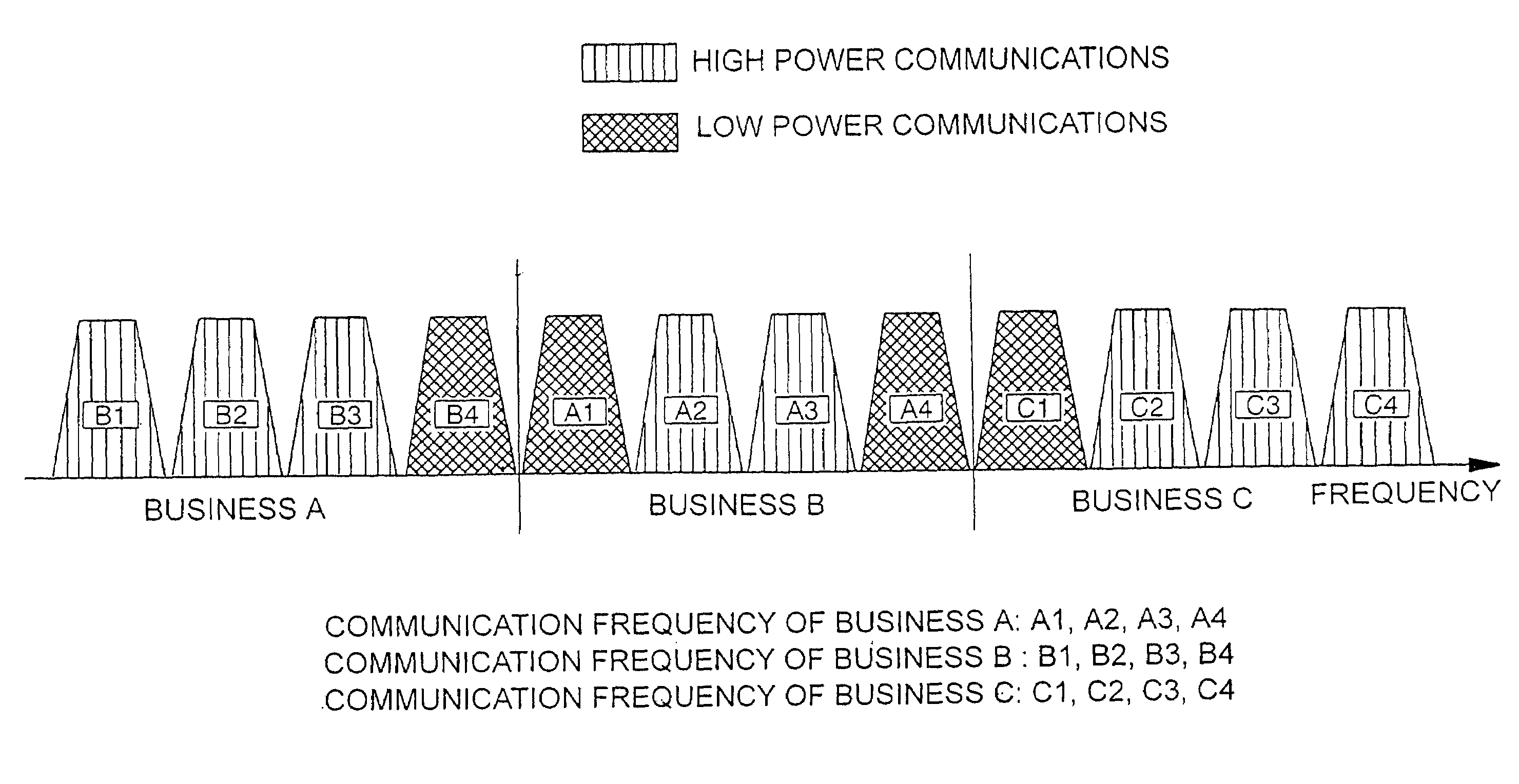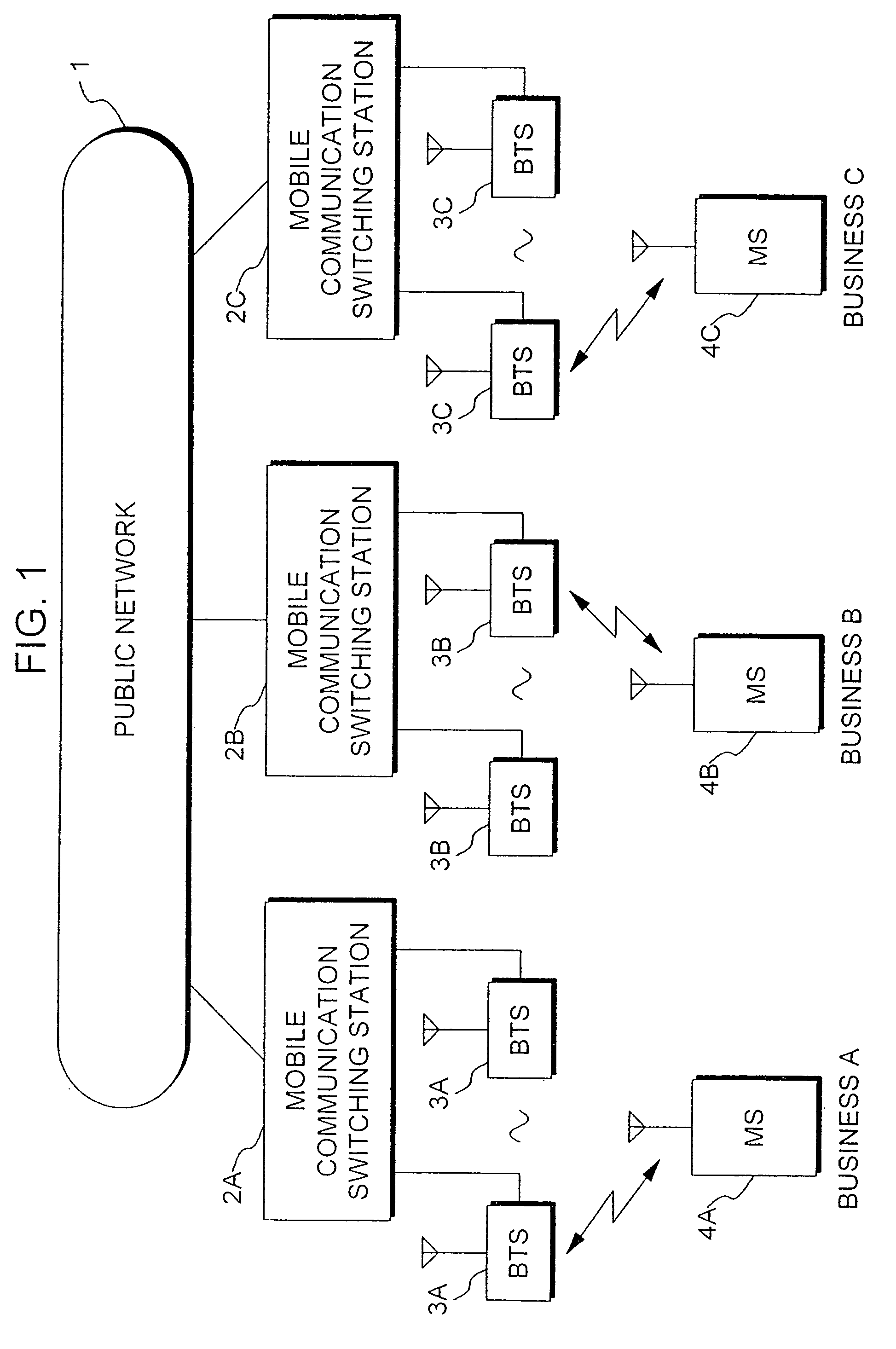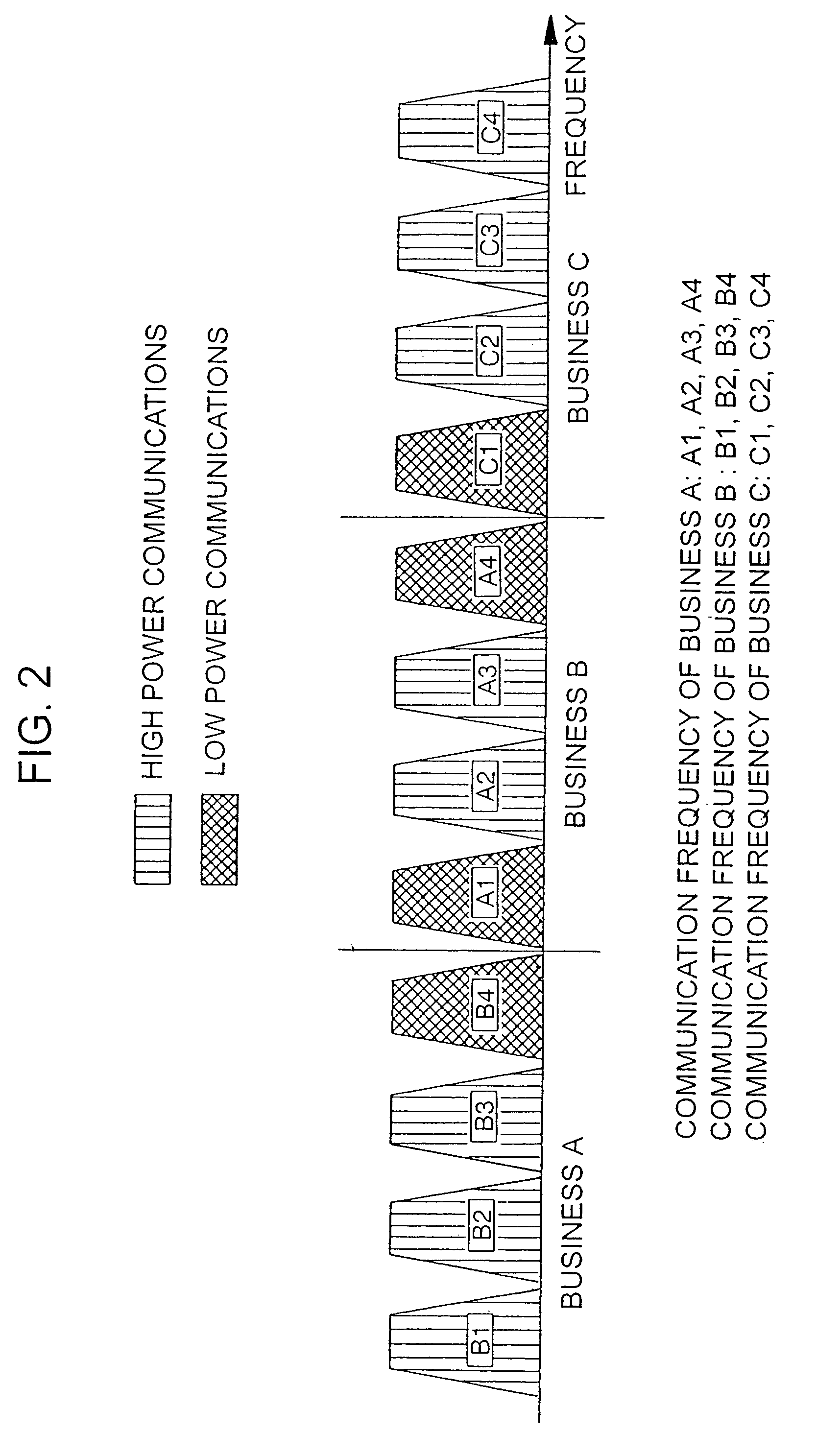Radio communication system, frequency allocation method and frequency allocation device
a radio communication system and frequency allocation technology, applied in the field of radio communication systems, can solve the problems of large interference from adjacent frequency bands (hereafter referred to as adjacent channel interference), large amount of adjacent channel interference, and large interference from adjacent frequency bands
- Summary
- Abstract
- Description
- Claims
- Application Information
AI Technical Summary
Benefits of technology
Problems solved by technology
Method used
Image
Examples
first embodiment
[0057]FIG. 1 is a diagram showing the structure of a radio communication system according to the present invention. In this radio communication system, businesses A, B and C offer mobile communication services. Additionally, this radio communication system is a CDMA (Code Division Multiple Access) mobile communication system.
[0058]In FIG. 1, mobile communication switching station 2A and base station 3A are communication installations for business A, mobile communication switching station 2B and base station 3B are communication installations for business B and communication switching station 2C and base station 3C are communication installations for business C. Although each business has many base stations and mobile communication switching stations aside from those shown in the drawings, these are not shown in the drawings in order to prevent the drawings from becoming overcrowded.
[0059]Additionally, in FIG. 1, mobile station 4A is the mobile station of a user contracted with busin...
fourth embodiment
[0106]Next, a frequency allocation method in a radio communication system according to the present invention shall be explained.
[0107]Generally speaking, in voice communications in digital mobile communications, the voice data are compressed and sent at a low data rate so as not to obstruct bi-directional real-time conversation. Additionally, since a large code error occurs in digital mobile communications in comparison to wired communications, it is necessary to perform error correction coding on the compressed voice data. For this reason, the transmission quality, e.g. the values demanded for the code error rate must be set relatively weakly (e.g. BER (Bit Error Rate)=1×10−3).
[0108]Additionally, in packet communications, the data are divided into small blocks, and each block is transmitted via a radio channel, with retransmission control being performed when there is an error in a block. For this reason, when transmitting with a comparatively high error rate, or when an interrupti...
PUM
 Login to View More
Login to View More Abstract
Description
Claims
Application Information
 Login to View More
Login to View More - R&D
- Intellectual Property
- Life Sciences
- Materials
- Tech Scout
- Unparalleled Data Quality
- Higher Quality Content
- 60% Fewer Hallucinations
Browse by: Latest US Patents, China's latest patents, Technical Efficacy Thesaurus, Application Domain, Technology Topic, Popular Technical Reports.
© 2025 PatSnap. All rights reserved.Legal|Privacy policy|Modern Slavery Act Transparency Statement|Sitemap|About US| Contact US: help@patsnap.com



